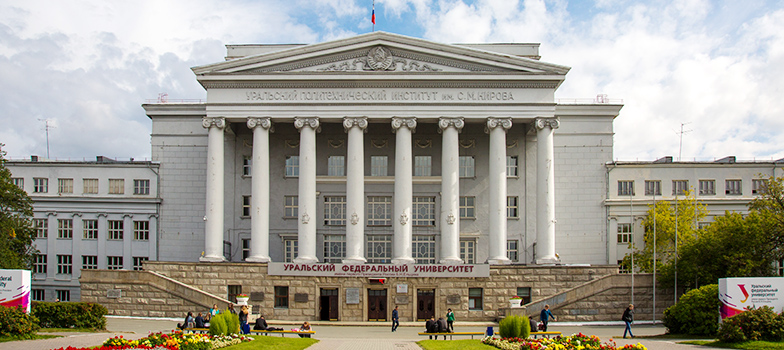Chemists Create a Basis for Obtaining a Cluster of New Drugs
According to Yanina Burgart, the new drugs will fight bacteria and fungi that are resistant to existing drugs. Photo from the personal archive of Yanina Burgart.
A group of scientists from the Institute of Organic Synthesis of the Ural Branch of the Russian Academy of Sciences and the Ural Federal University synthesized biologically active compounds based on the pyrazole heterocycle, which are promising for creating a whole cluster of new drugs with multidirectional action. This became possible thanks to the cooperation of the famous Ural school of synthetic chemists headed by RAS academicians Valery Charushin and Oleg Chupakhin and other research centers in the region. An article on the content and results of the work was published in the European Journal of Medicinal Chemistry.
Heterocycle pyrazole (C3H4N2) serves as a proven basis for drug discovery. Suffice it to name such well-known representatives of this class of heterocyclic compounds as analgin, butadione, celebrex, which have pronounced anti-inflammatory, analgesic and antipyretic properties and are actively used in clinical practice.
“According to the calculated data, the bioavailability and metabolism of the pyrazole structures synthesized by us should be sufficient for the subsequent development on their basis of anti-tuberculosis, antibacterial, antifungal, antioxidant, antitumor and analgesic drugs. The pharmacological “profile” of the basic structures was determined by which groups were introduced into the heterocyclic “backbone” of pyrazole. For example, the introduction of an amino group into a molecule gave it a pronounced analgesic activity and promising antitumor properties, ”explains Yanina Burgart, head of the research group, leading researcher at the Laboratory of Organofluorine Compounds of the Institute of Organic Chemistry, Ural Branch of the Russian Academy of Sciences, and the Scientific Laboratory of Medicinal Chemistry and Advanced Organic Materials of the UrFU.
The peculiarity of the obtained compounds is that they contain fluorine atoms, the most electronegative element in nature. Therefore, the introduction of fluorine into the structure of organic compounds, including the pyrazole series, not only significantly affects the chemical and physical properties of compounds, but also changes the spectrum of their biological action.
“For example, their metabolic stability and lipophilicity increase, which leads to an increase in the bioavailability of fluorinated molecules, that is, allows fluorine-containing compounds to more easily penetrate biological membranes. Consequently, the substance is able to more effectively interact with biological targets, as a result, a smaller dose of the drug is required, and its toxic effect on the body is reduced, ”says Yanina Burgart.
The research carried out is the work of a large team of authors from representatives of various research organizations in Russia. Thus, quantum-chemical calculations were carried out by scientists from the Ufa Institute of Chemistry of the Russian Academy of Sciences, the antiradical properties of the synthesized compounds were studied at the Institute of Physiologically Active Substances of the Russian Academy of Sciences (Chernogolovka, Moscow Region). The antitumor effect of the substances was tested in vitro by a group of UrFU biologists headed by the director of the Department of Biology and Fundamental Medicine Maria Ulitko. Perm National Research Polytechnic University conducted in vivo experiments to determine the analgesic activity of compounds.
“To do this, we used a hot plate test on experimental animals, rats and mice. The essence of this experiment is to estimate the time interval during which the experimental animal, for example, a mouse, does not feel pain from the hot plate on which it is placed. That is, the introduction of our compound, which has an analgesic effect, should significantly increase the time the mouse is quietly on the hot surface until it feels pain and begins to twitch its paws and jump, ”describes Yanina Burgart.
In addition, the anti-tuberculosis, antibacterial and antifungal activity of the obtained compounds was tested in vitro. The next big stage of work is to modify them so that, passing from multiple to specific biological activities, they effectively interact with certain biotargets.
“If we talk about bacteria and fungi, they, like viruses, constantly mutate, their ‘addiction’ and resistance to existing antibiotics and antimycotics is increasing. Therefore, new antibacterial and antifungal agents are required, the resistance to which in microorganisms has not developed, ”explains Yanina Burgart.

